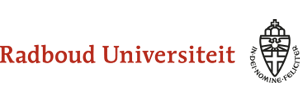American English Phonetics
Another American English Faculty Project
12.4 The Palato-Velar Approximant: /r/
GA /r/ is articulated in a variety of ways. However, the sounds that are produced by these various articulations are so similar as to be virtually indistinguishable. Indeed, from an auditory point of view, it makes sense to speak of a single /r/-like quality that is shared by all /r/s regardless of the particular articulatory gesture underlying them.
This r-sound is heard not only before and after vowels, as in red, arise, barrel, far, board, but also in words like bird, fur, murmur, where it occurs as a monophthong which functions as syllable bearer.
red
arise
bird
fur
Since, in all these cases, we are dealing with what is essentially a single sound quality, we have chosen to use a single symbol /r/ to represent this sound, so that red is /rɛd/, bird /bɪrd/ and banner /bænr/. The problem with this notation is that it fails to reflect the different status of the r-sounds. In red, /r/ functions as a consonant in onset position. In words like bird, banner, it functions as a vowel, i.e. the peak of a syllable. (So some people might argue that instead of /ˈmɜrdər/ for murder we ought to transcribe /ˈmr̩dr̩/.)
What all the articulatorily diverse but auditorily similar /r/’s have in common is that the speech tract is constricted or narrowed at two points. One constriction is formed in the palatal area, the second is due to a retraction of the tongue root toward the back wall of the pharynx. The narrowing in the palatal area is brought about in one of two ways. In the majority of cases, the tip is held low and the body of the tongue is bunched backward and arched, so that the area where the front and back of the tongue meet is closest to that part of the palate where the hard and soft palate meet. There may be a dip between this narrowing and the one formed by the tongue root. This type of /r/ may be called the bunched or palato-velar /r/.
The narrowing in the palatal area may also arise as a result of a raising of the tip and blade of the tongue in the direction of the area immediately behind the alveolar ridge. This post-alveolar /r/ may, but need not be retroflex, i.e. articulated with the tip of the tongue curled up and pointing backward, and is usually accompanied with lip rounding.
In unaccented syllables, /r/ may be lost when another /r/ follows as a result of r-dissimilation. Examples are surprise [səˈpʰɹ̥aɪz̥], particular [pʰəˈtʰɪkj̥ələr], govemor [ˈg̥ʌvənər] and thermometer [θəˈmɑːməɾər].
surprise
governor
Advice for Dutch learners:
Remember that GA /r/, in most contexts, is an approximant. This means that the alveolar or uvular contacts that are used for Dutch /r/ are undesirable. The easiest articulation to learn is probably the post-alveolar one, involving a raising of the tip and blade in the direction of the post-alveolar region. You can start from a voiced fricative like [z] or English [ʒ]. Now slowly move the contact backward until the tip slides off the alveolar ridge and is tilted slightly backward, making sure it does not touch the palate. The bunched variety, which is more common in the pronunciation of native American speakers, is more difficult to learn, except possibly for those who use a palatal /r/ in Dutch. Since /r/ is essentially a vocalic sound, detailed descriptions of the configuration of the articulators are not generally very helpful because they are extremely difficult to imitate in the absence of any major articulatory contact. Instead, try to rely on your ability to imitate the sound by ear, and don’t worry too much about exactly how you make the sound. After all, native speakers also use different articulatory gestures to produce GA /r/.
